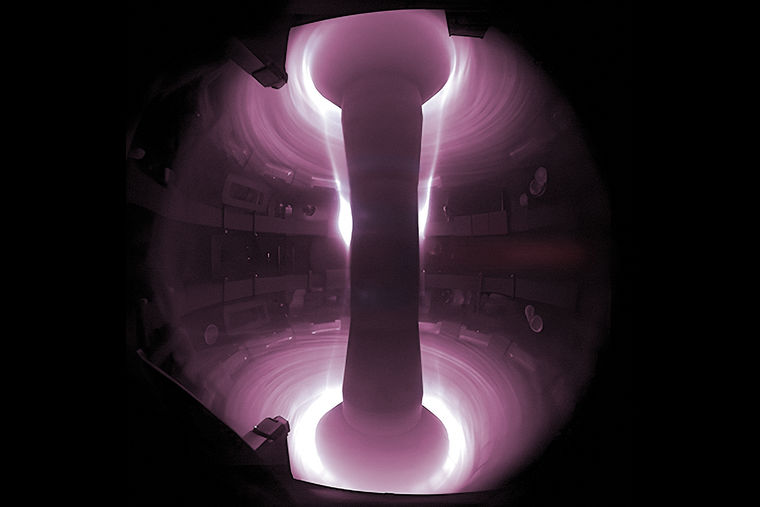UK scientists achieve breakthrough that brings fusion energy closer to reality
MAST Upgrade, the UK’s national fusion experiment, has demonstrated multiple world-first breakthroughs during its fourth scientific campaign.
Scientists at UKAEA have successfully used magnetic coils to stabilise unstable fusion plasma for the first time in their type of machine. The achievement could be a crucial step towards making fusion power plants a reality.

What this means for clean energy
Fusion energy works by recreating the same process that powers the Sun – fusing hydrogen atoms together to release enormous amounts of clean energy. Unlike fossil fuels, fusion produces no carbon emissions.
The breakthrough happened at MAST Upgrade, the UK’s national fusion experiment based in Oxfordshire. It’s currently the world’s largest operational spherical tokamak – a machine designed like a cored apple rather than a traditional ring.
Solving a major fusion challenge
One of fusion’s challenges is keeping the super-hot plasma stable. When the plasma becomes unstable, it can reduce its performance. These instabilities, called Edge Localised Modes (ELMs), have been a major barrier to making fusion commercially viable.
The UKAEA team used special magnetic coils to create a 3D magnetic field that completely suppressed these problematic instabilities. This had never been achieved before in a spherical tokamak.

James Harrison, who leads MAST Upgrade Science at UKAEA, explained the significance:
Suppressing ELMs in a spherical tokamak is a landmark achievement. It is an important demonstration that advanced control techniques developed for conventional tokamaks can be successfully adapted to compact configurations to develop the scientific basis for future power plants like STEP, the Spherical Tokamak for Energy Production.
Multiple breakthroughs in one campaign
The researchers didn’t stop there. In the same series of experiments, they also:
- demonstrated independent control of the tokamak’s upper and lower exhaust systems, which could make future power plants more robust and flexible
- achieved a record 3.8 megawatts of power injected into the plasma
- created the best plasma shape ever recorded in the machine, with the plasma height reaching 2.5 times its width
This improved plasma shape is particularly important because it helps the plasma perform better and stay more stable – both crucial for a working power plant.
What happens next
The team plans to verify and expand on these findings in their next experimental campaign. The results will directly inform the design of the UK’s STEP (Spherical Tokamak for Energy Production) programme, which aims to build a prototype fusion power plant.
Fulvio Militello, Executive Director of Plasma Science and Fusion Operations at UKAEA, said:
I’m delighted with the ground-breaking findings from our team at UKAEA. These achievements reinforce the UK’s leadership in fusion research and bring us closer to realising fusion as a clean, safe, and abundant energy source for the future.
The breakthrough represents significant progress towards making fusion energy commercially viable, potentially providing clean electricity for millions of homes while helping the UK reach its net-zero carbon emissions targets.